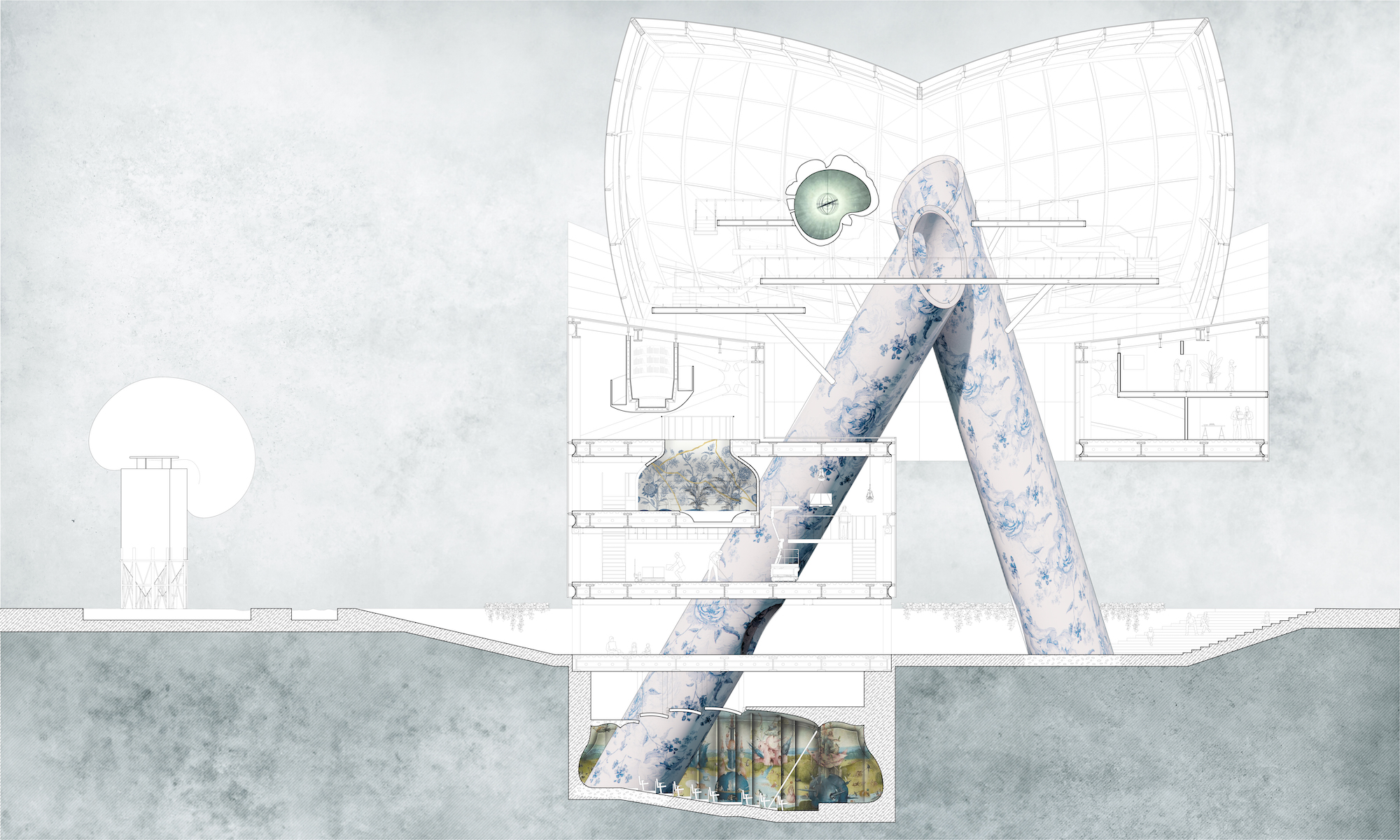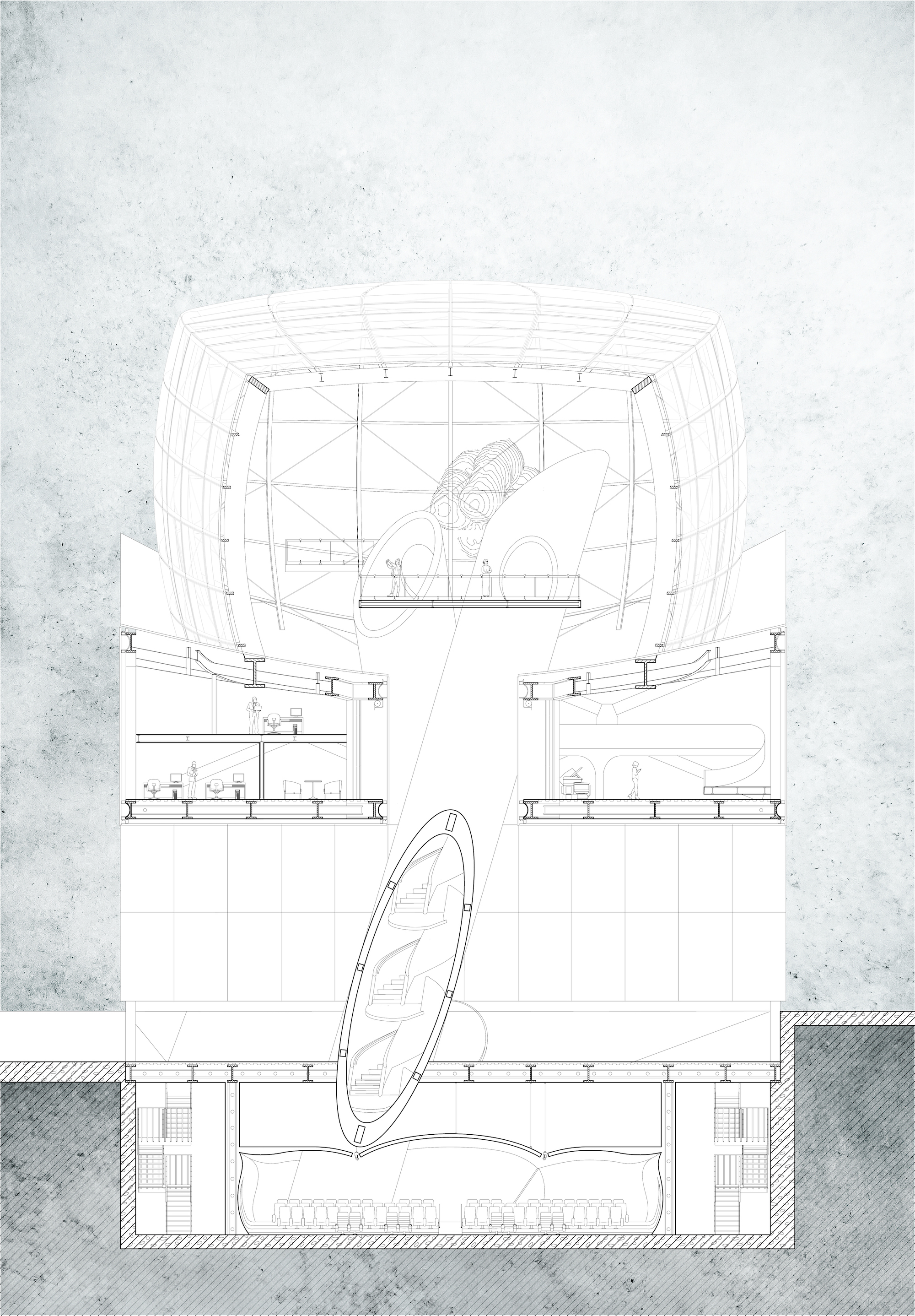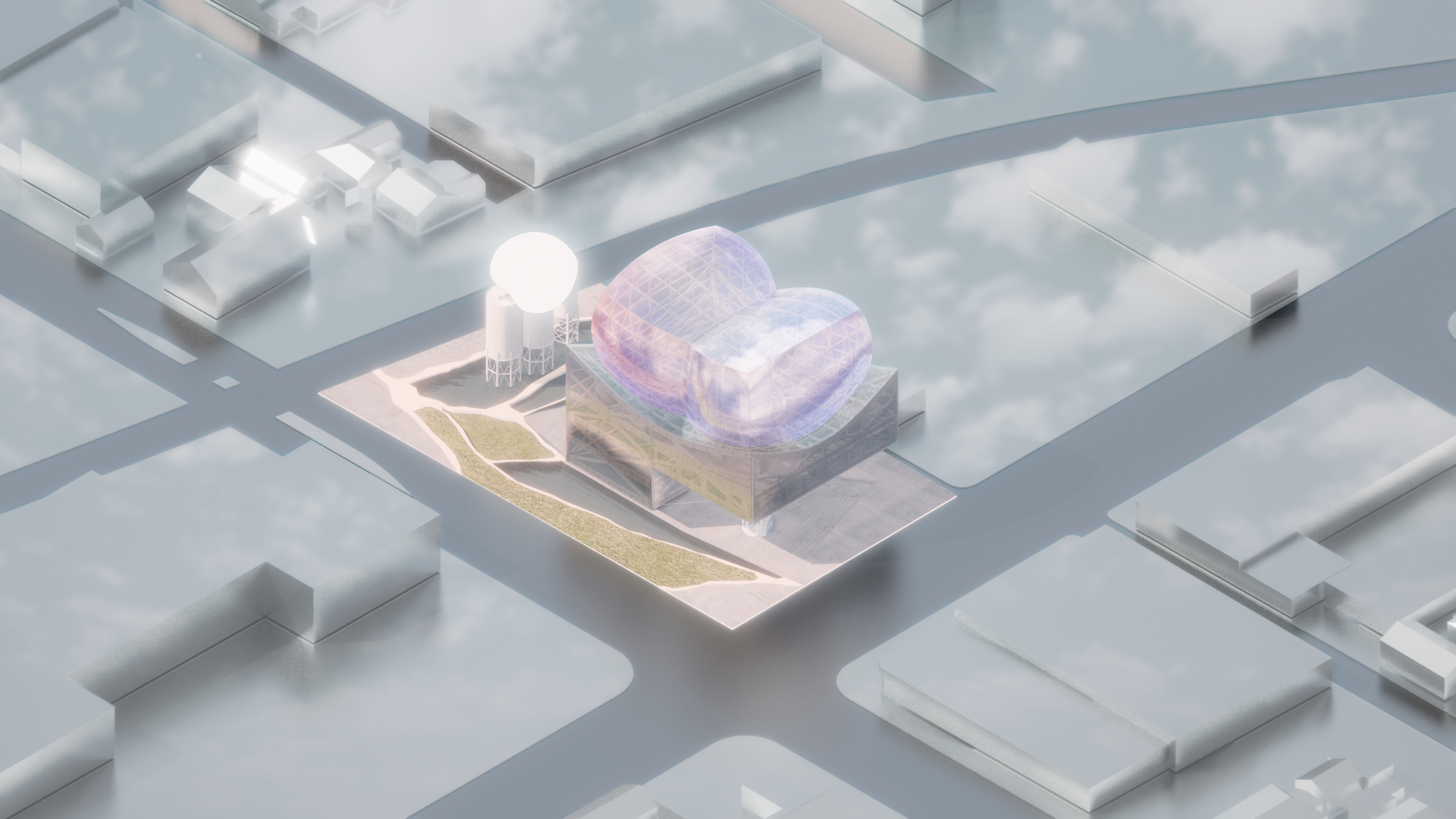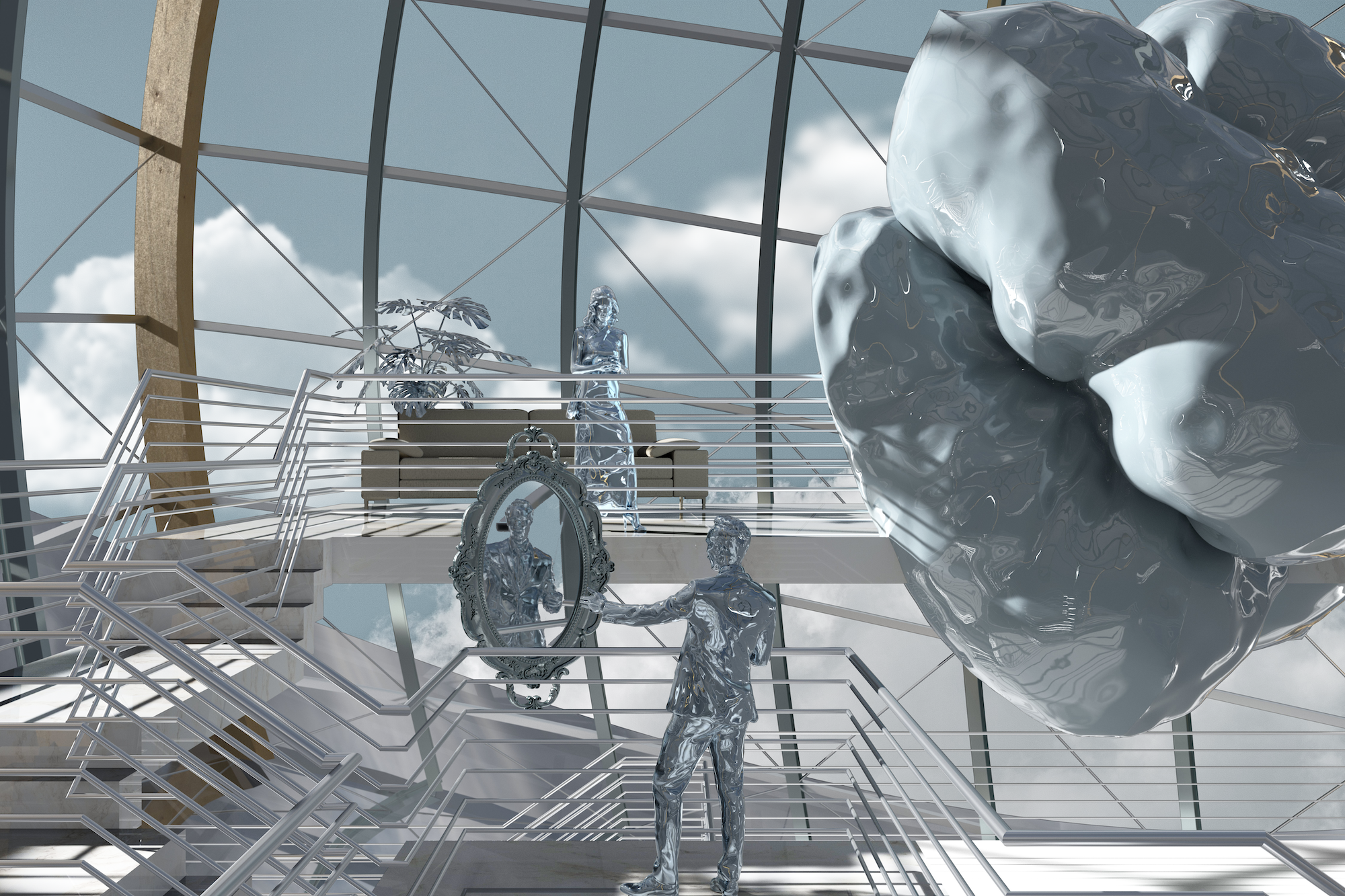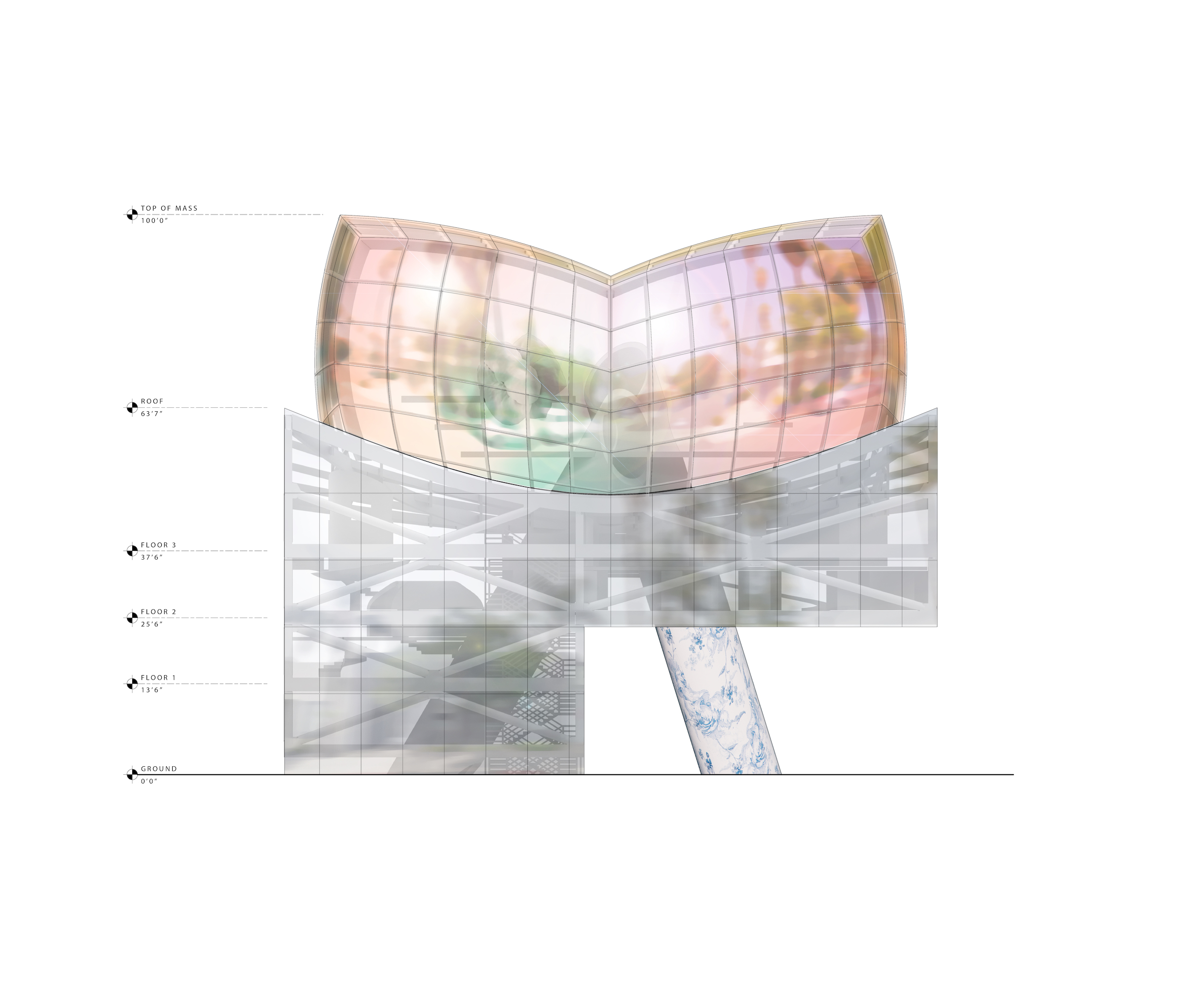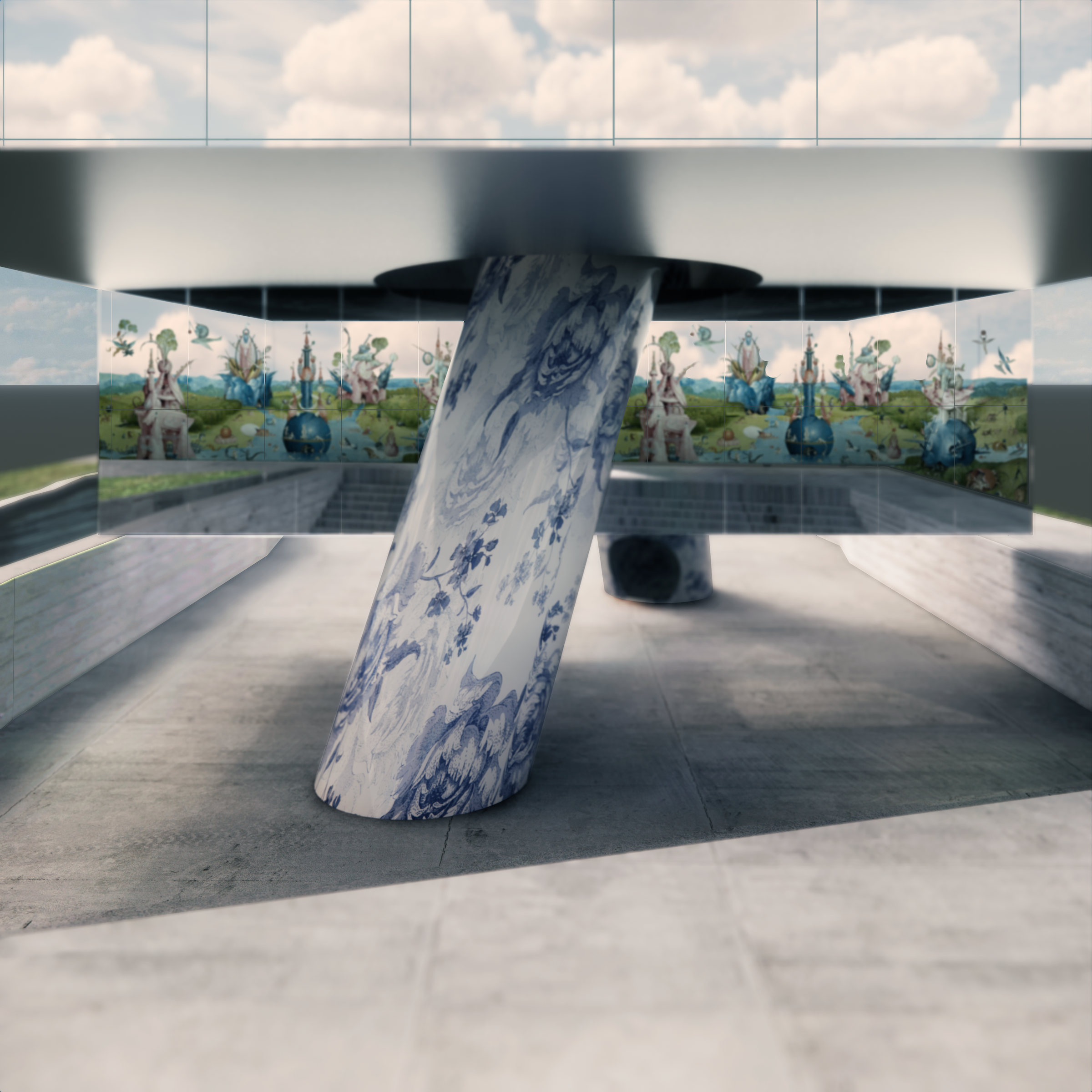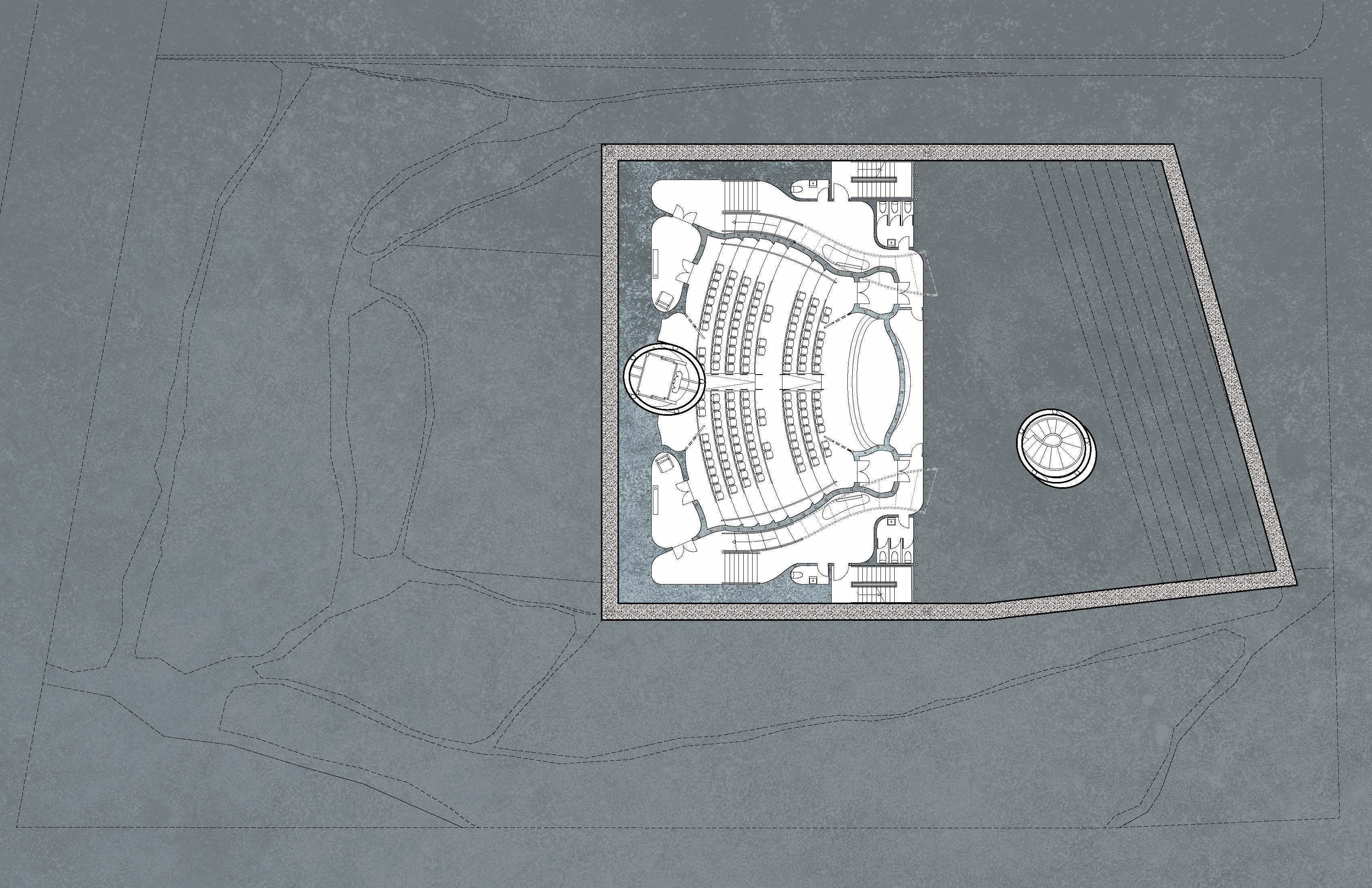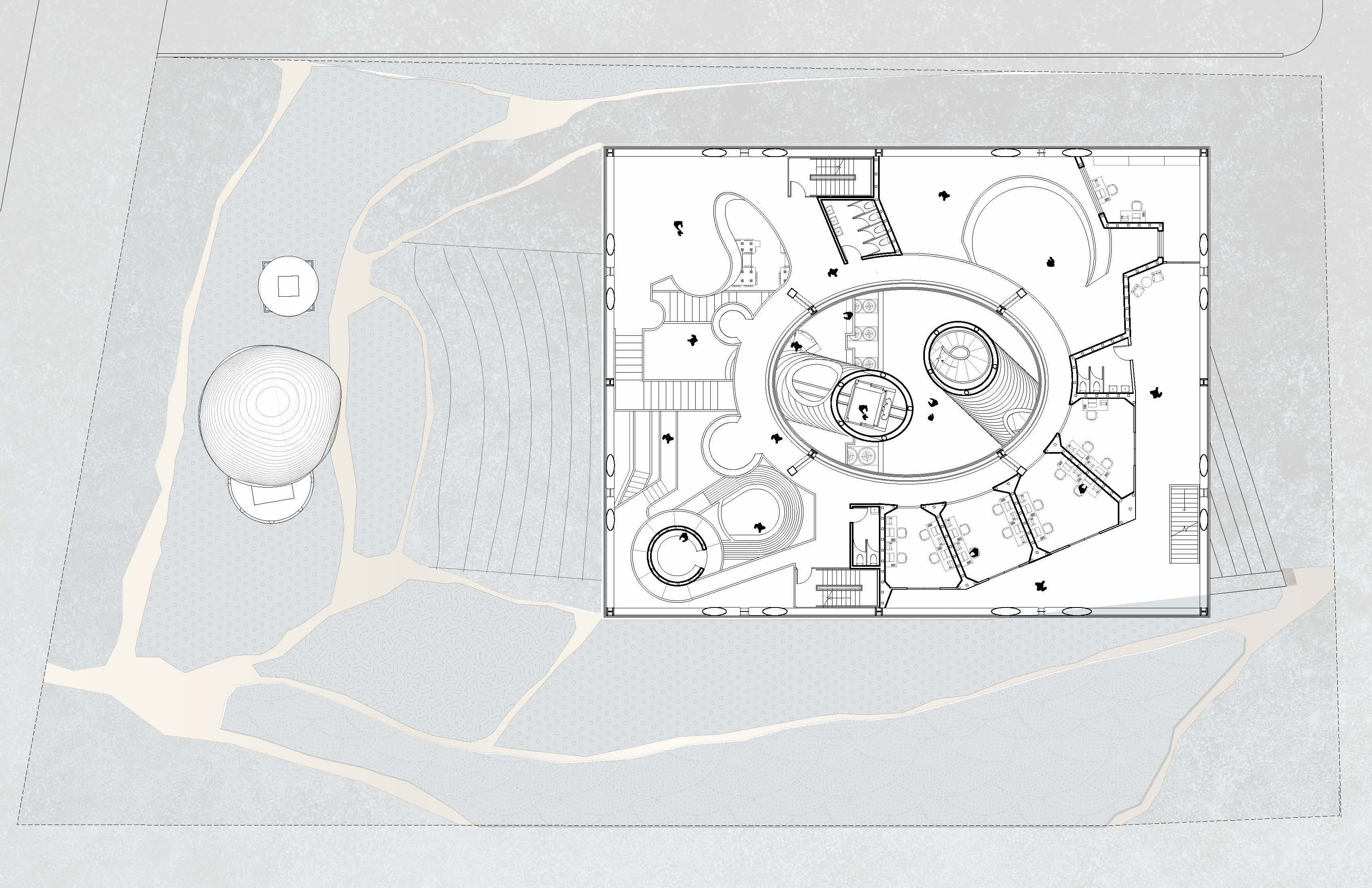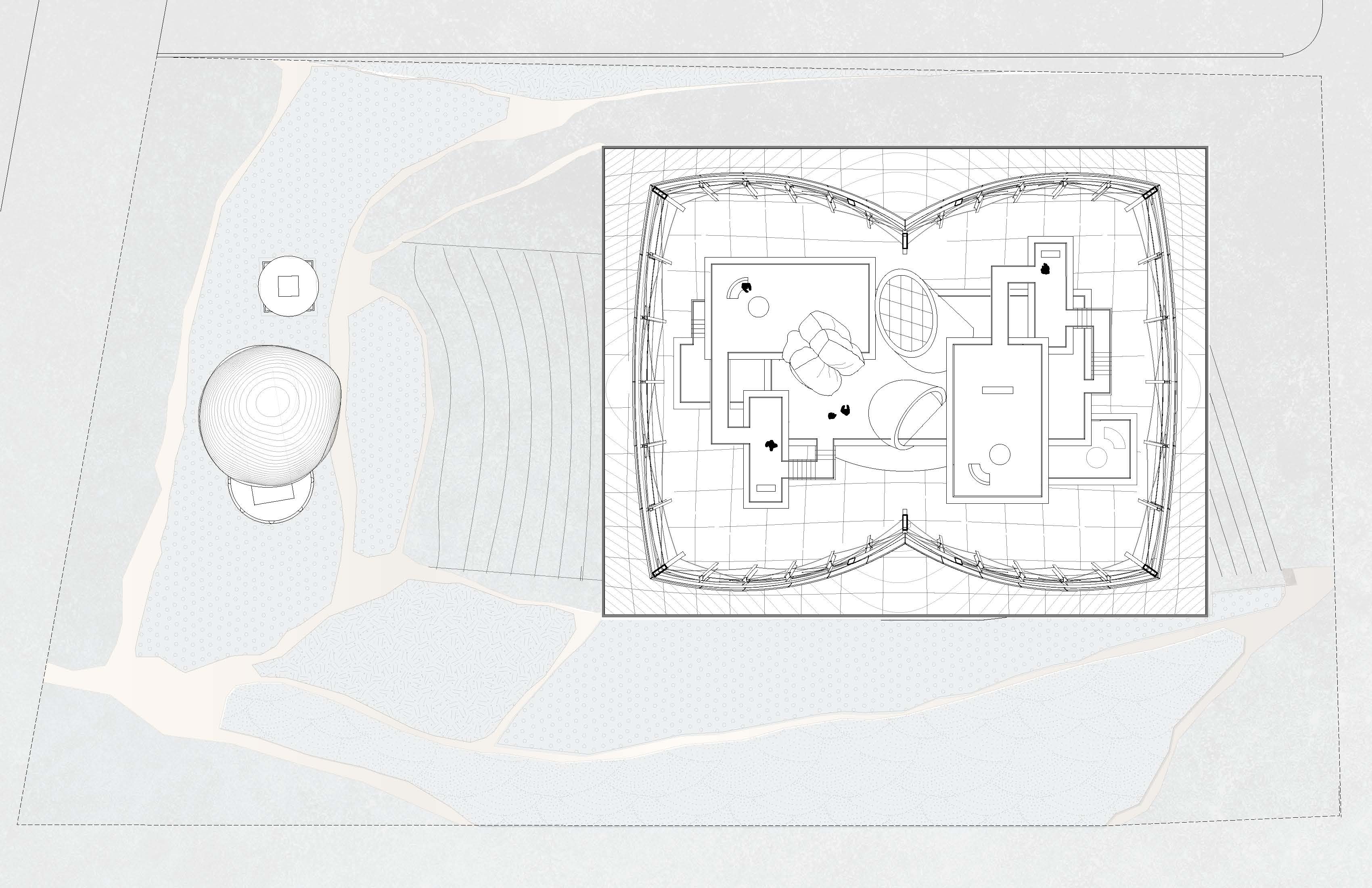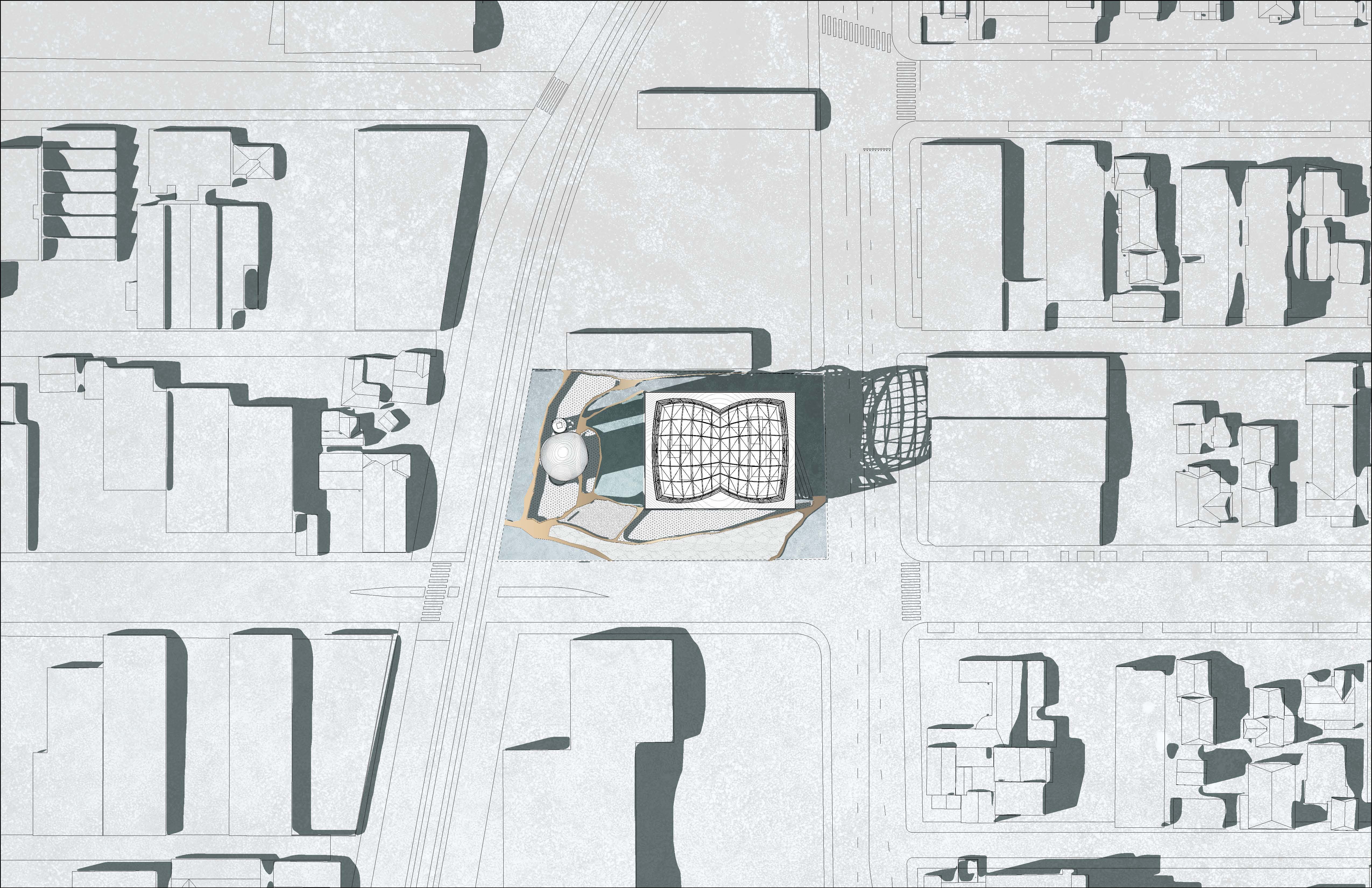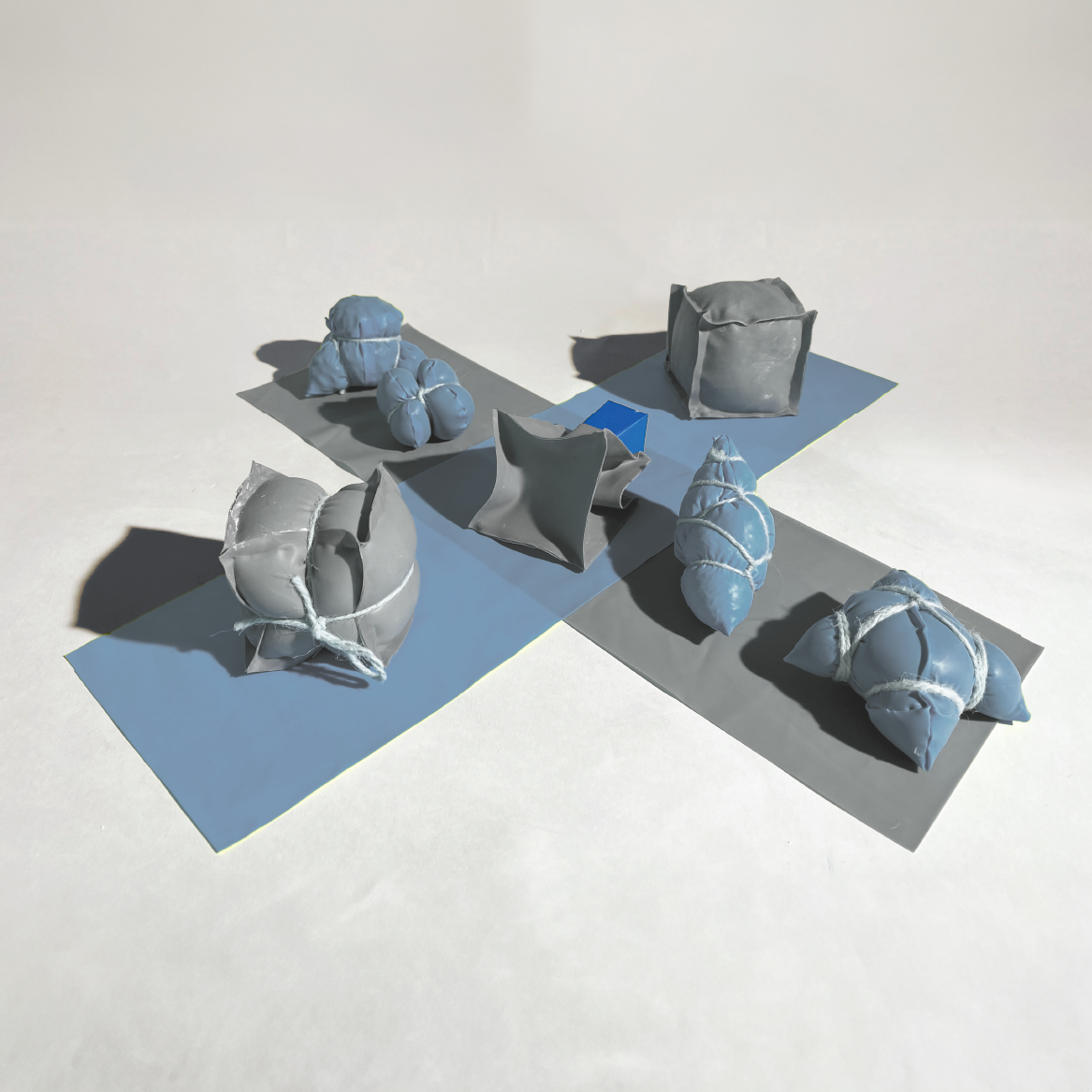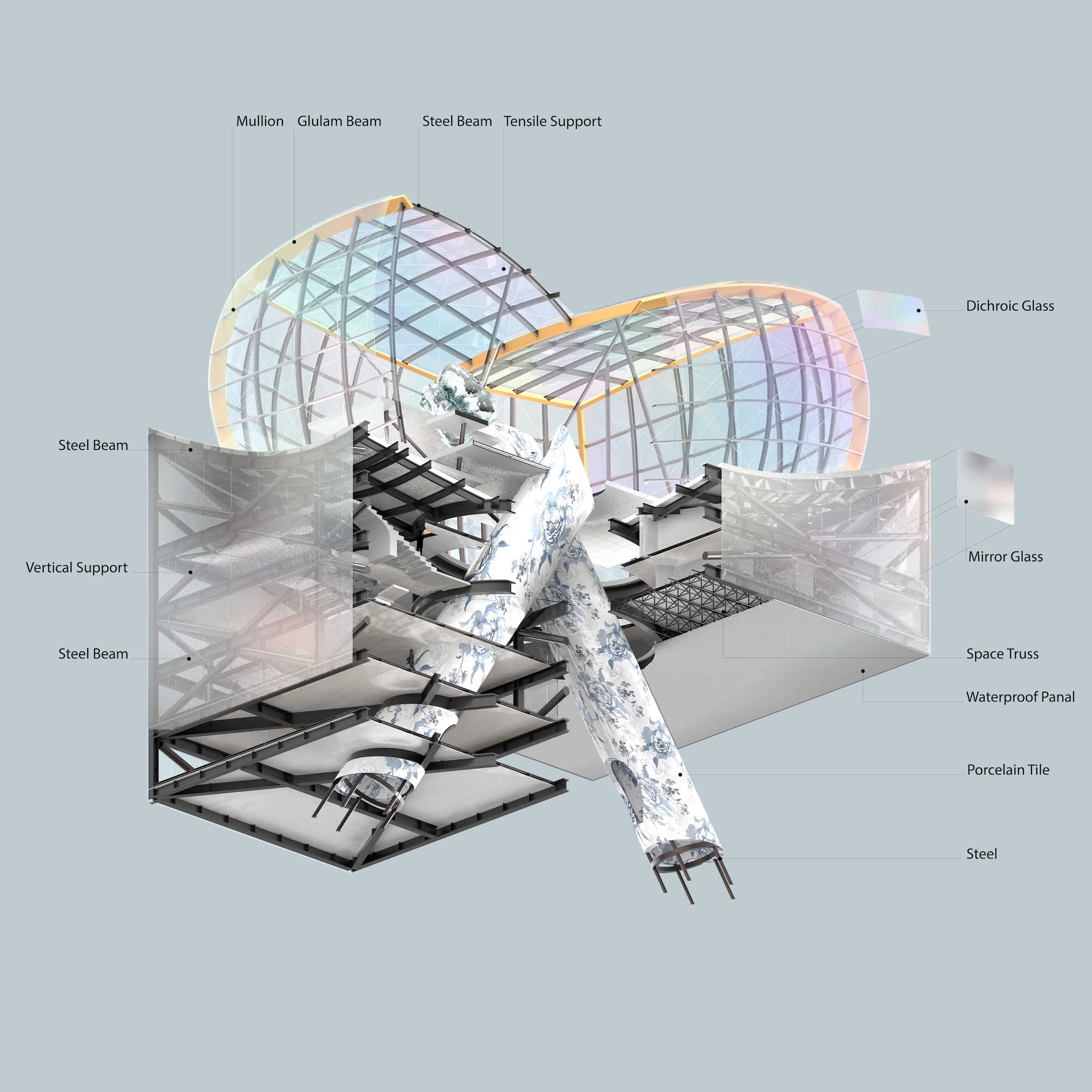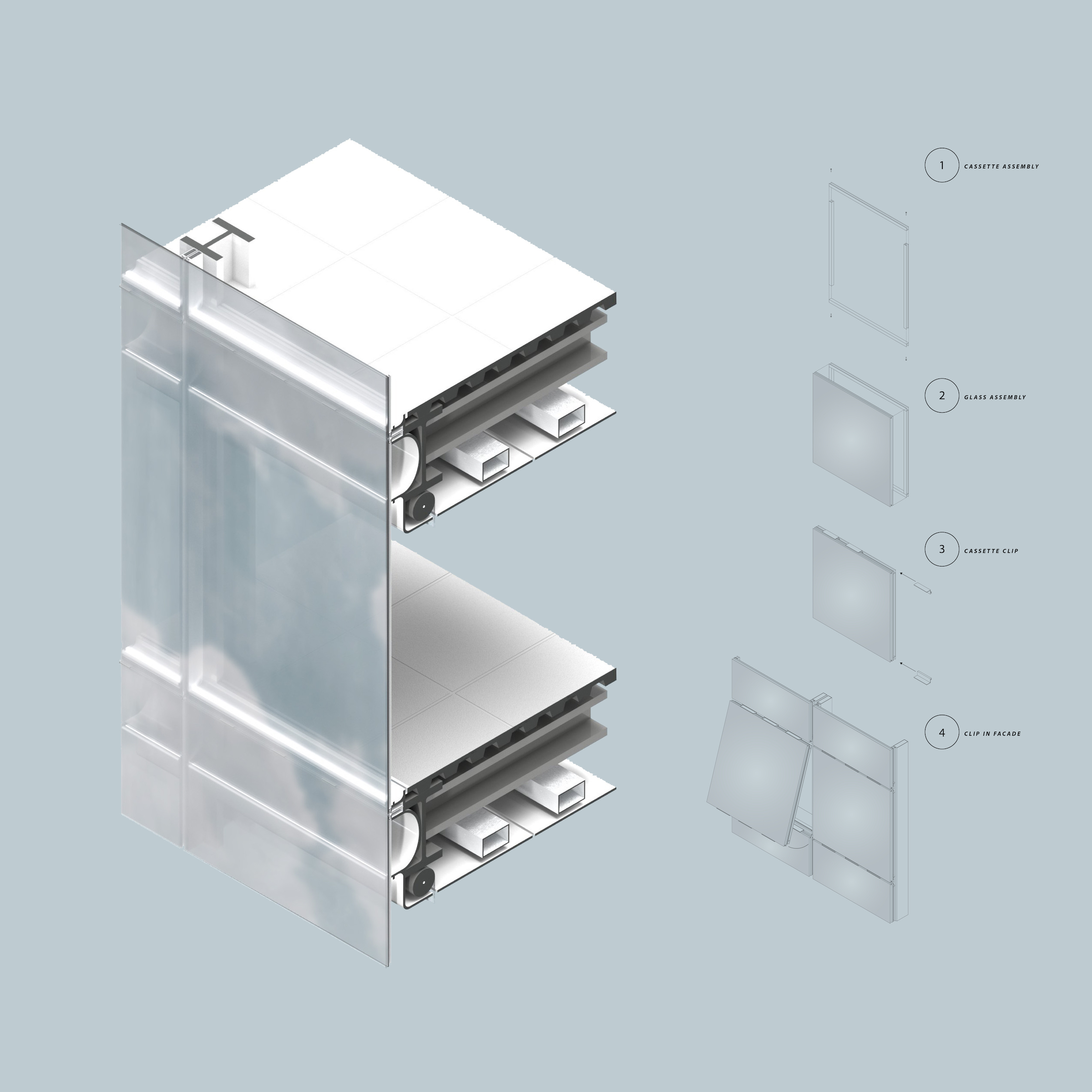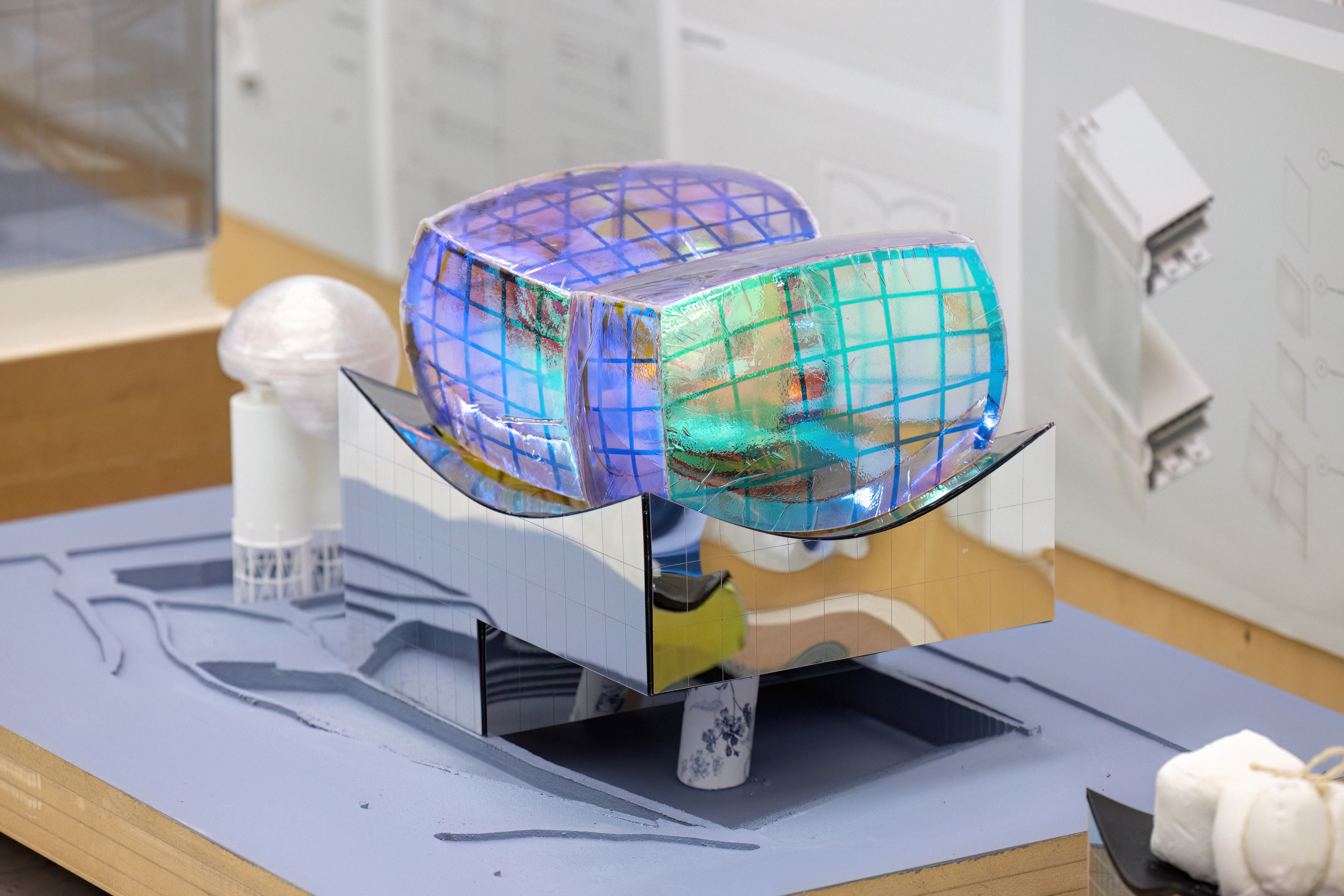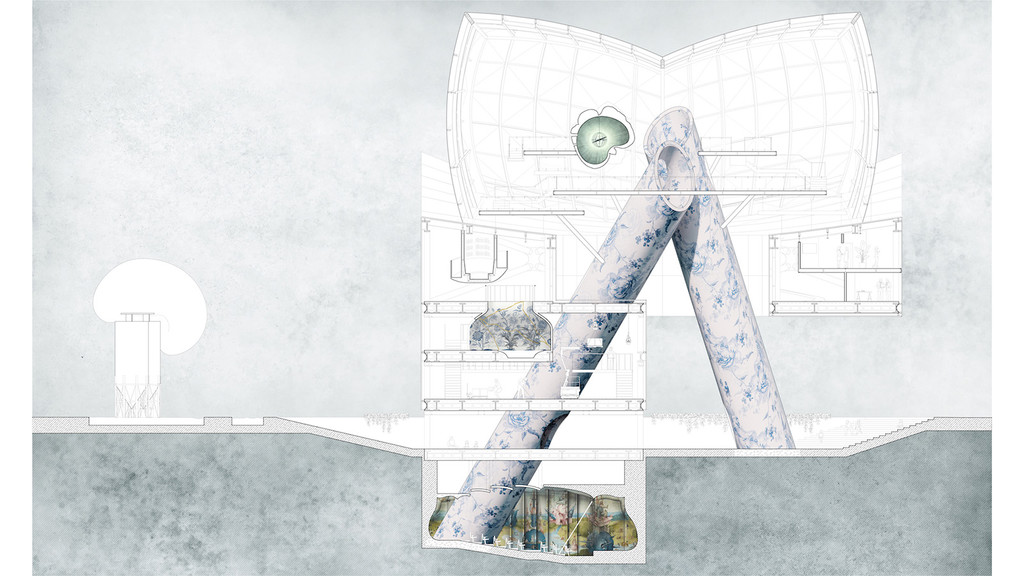
Riley Hammond and Shan Tang's final project, "Fata Morgana"
414-415 Comprehensive Design Studio
2023
Work by Riley Hammond and Shan Tang (both MArch '24), instructed by Simon Kim.
Fata Morgana
Fata Morgana (translation: Mirage) is a study in discrete parts where architectural tectonics intertwine an exquisite collection of surrealist fantasies. The common surfacing of mirrored glass obscures and distorts the part-to-whole relationship of interior elements. The outward facing effect is a building which bluntly reflects its contextual surrounding. The ‘Fata Morgana’ obscures the building in context as the reflections dissipate into the atmosphere. The interior experience withholds its mystery, inciting a sensual desire for exploration. Through glass, porcelain, and kintsugi, these discrete worlds become an object of architectural fetish.

Completed for Winter 2023/Spring 2023 Comprehensive Design Studio (second-year MArch core), entitled "NEXT-CYCLE."
This studio challenged students to develop a position in engaging an existing building/site and to imagine a highly specific and detailed project for its next cycle towards an alternative future. The measurable and undeniable realities of climate change, finite resources of building materials, environmentally detrimental building practices make us all pause and reconsider how we as architects, as a discipline, as individuals and as society should rethink the ways we responsibly reimagine and inhabit the future of our built environment. More than any other next generation of architects, this rising next generation of architects will be deeply engaged in the imagining the next cycle of existing building stock, sites, grounds, cities and territories. This paradigm of engaging the existing material accumulation on a site in a constructive and creative manner brings along a set of interesting challenges and potentials. As we contemplate architectural value for spaces that were made for other needs at other times, for materials that might not be directly conducive to present needs and meanings sought; as we decide what to salvage, what to reappropriate, what to reconfigure, what and how to add to; and as we try to make sensible new tectonics for a culture that evolves rapidly, our framing of the problem begins to shift from the territory of responsible environmental ethics towards the territory of potential emergent aesthetics.
